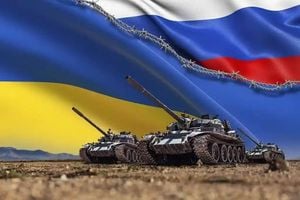Former President Barack Obama recently experienced a close call with security during his visit to Los Angeles, sparking significant concern and criticism surrounding the United States Secret Service. The incident, which unfolded outside the upscale restaurant Mother Wolf on September 21, has raised questions about the agency's ability to protect prominent figures amid rising instances of political violence.
It was reported by various outlets, including TMZ, detailing how Obama was dining with his daughters, Malia and Sasha, when an armed security guard inadvertently approached their SUV. The guard, whose identity has been kept anonymous, was working at an event nearby when he noticed what he thought was Secret Service activity. Unaware of Obama's presence, he walked over to inspect the situation.
According to the guard, he spotted two Secret Service agents and saw the black SUV with Department of Homeland Security license plates. Before he realized who was inside, he took a quick photo, still thinking he was just witnessing high-profile security. The shock came when he noticed Obama sitting at the back, using his laptop. Recognizing the gravity of his position—being armed and close to the former president—he decided to step away from the vehicle and reported the encounter.
The guard articulated concerns about what he viewed as severe lapses in the Secret Service’s standard operating procedures. He remarked on the absence of adequate coverage, particularly noting there were no agents stationed at the rear of the SUV or ensuring the stairwell area was secure. "There was definitely a security lapse on their part," he stated, emphasizing the significant danger this posed.
His claim ignited outrage on social media, with many users expressing disbelief and frustration over the situation. One user remarked, "Umm, @SecretService, you need to do a WAY more efficient job keeping my favorite President @BarackObama SAFE, as well as @KamalaHarris and @MichelleObama. They’re all very precious cargo." Such sentiments reflect broader public concern, especially following troubling incidents of political violence, including the recent shooting targeted at vice-presidential candidate Kamala Harris’ campaign office.
Responding to the allegations of security failure, the Secret Service communicated through various channels, labeling the reports inaccurate. They stated, "The Secret Service cannot provide the details on our means and methods of protection, but we can confirm at no time were any protectees inside the vehicle" during the alleged incident. They maintained the photo taken by the guard was not during the purported breach but upon the vehicle's departure.
Adding layers to the situation, this incident surfaces amid intensified scrutiny of the Secret Service following several recent security failures. These included assassination attempts against former President Donald Trump earlier this year. A Senate report has outlined miscommunication between Secret Service agents and local law enforcement during Trump's event, raising alarms about the agency's current operations.
Given the recent spike in political tensions and threats, the stakes for the Secret Service have never been higher. Political violence has shown to be on the rise, prompting calls for more stringent security measures across the board, especially for sitting and former presidents. The agency's reputation is now under the microscope, with many advocating for reforms to address these lapses.
While the Secret Service's reputation is on the line, the guard's fears and frustrations resonate with the public, reflecting the unsettling reality of contemporary political life. The agency must grapple with how to improve its protective measures, especially for those like Barack Obama, who remain prominent public figures.
Obama, meanwhile, has not made any public comments about the security breach incident. Nevertheless, this event serves as a stark reminder of the vulnerabilities involved and the heightened need for protective measures surrounding political figures.
Overall, the incident raises questions not just about the immediate safety of public officials but about the culture and operational effectiveness of protection agencies tasked with their security. With everything at stake, the government and all involved parties must take this incident seriously and work toward preventing any such breaches from occurring again.



